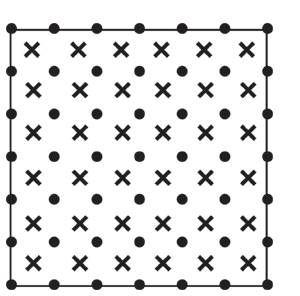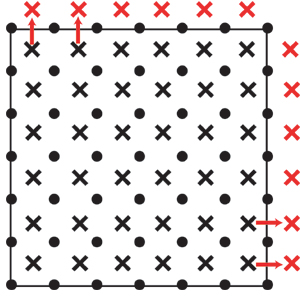
| Dot & Cross Points The MM5 horizontal grid has an Arakawa-Lamb B-staggering of the velocity variables with respect to the scalars. The scalars (T, q etc.) are defined at the center of the grid square, while the eastward (u) and northward (v) velocity components are collocated at the corners. The center points of the grid squares will be referred to as cross points, and the corner points are dot points. The number of I/J points specified in the TERRAIN step (NESTIX/NESTJX), is equal to the number of DOT points in the model domain.
When looking at the picture above, it is obvious that the cross points have one point less than the dot points. But when looking at the arrays in the MM5 data files (TERRAIN, REGRID, LITTLE, INTERPF, MM5, etc.) one will notice that dot and cross point arrays all have the same dimensions. See the extract from the SOC case MMOUT_DOMAIN1 below (created with the readv3.f utility).
The reason for this is that equal array dimensions are easier to work with in a programming environment. To ensure that dot and cross point arrays have the same size, an extra row and column is simply added to the cross point arrays. This row and column is filled with the same values as the last row and column in the cross point arrays.
|



